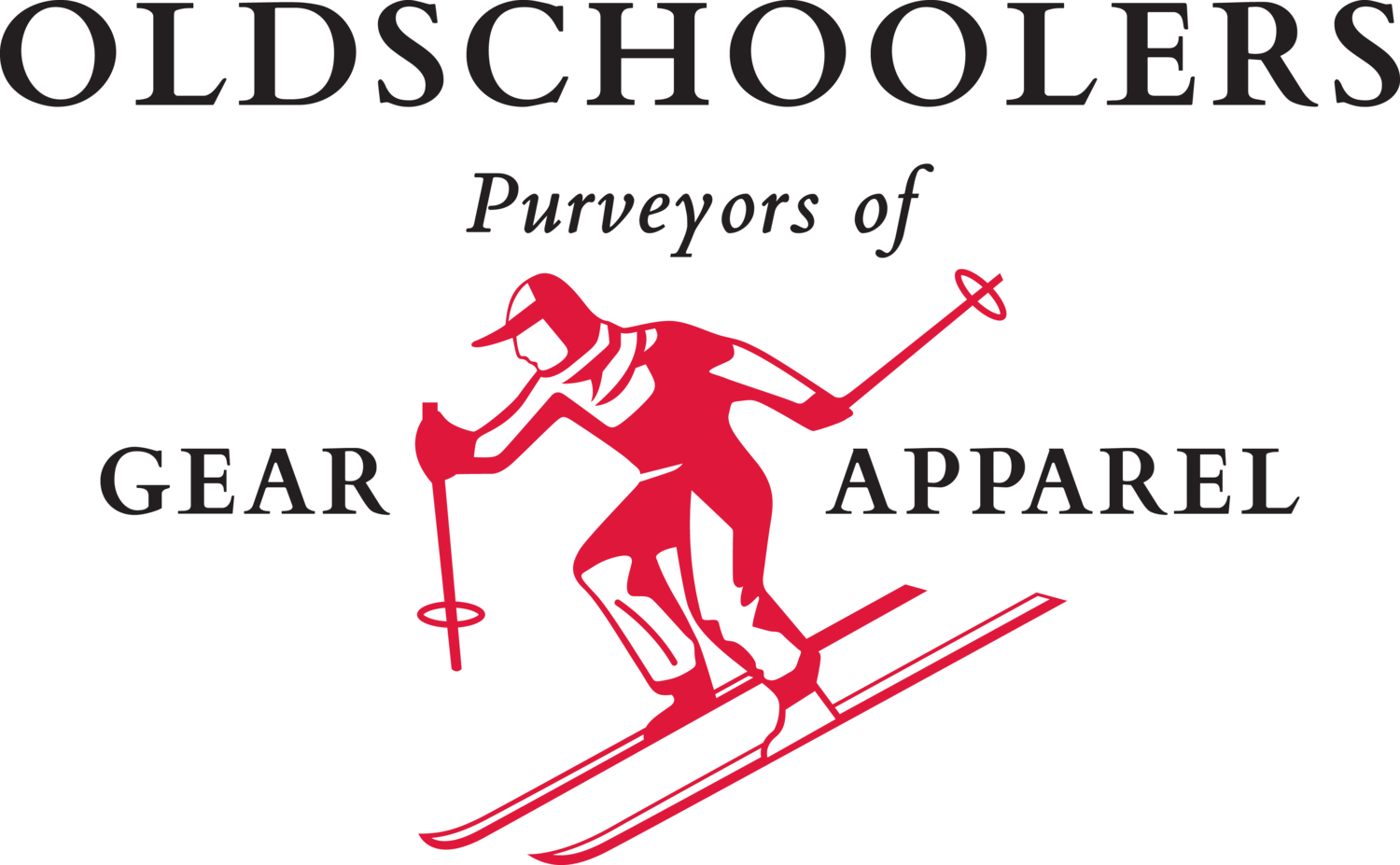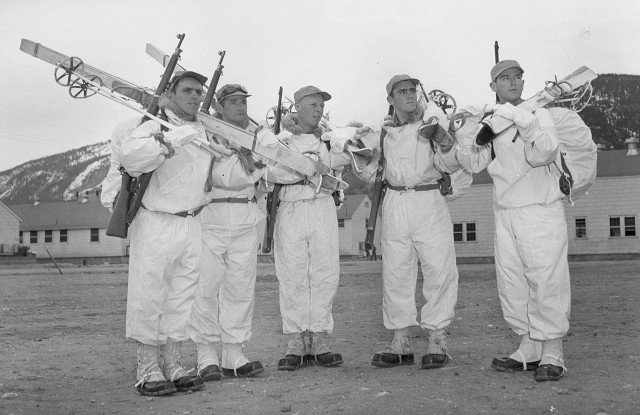5 reasons to buy the Alps & Meters’ Alpine Anorak: We put the product through its paces
A timeless design, built using traditional materials and methods.
“The Ski Troops”
Back in the 1940s, the United States found itself deep in global conflict. The American armed forces were not prepared for fighting in the cold, relentless and unforgiving alpine terrains of Europe, and America itself. They needed to create an elite force, fit, trained and prepared for cold-weather combat..
Under the watchful eyes of Charles Minot Dole (President of the National Ski Patrol, USA), the 10th Light Alpine division was commissioned in 1943 (soon to become the The 10th Mountain Division of the United States Army in 1944) - an elite, fast and light unit, created to focus on winter and mountain fighting during WWII. The original troop was formed of volunteers who shared a passion (and presumably talent) for adventure, skiing and winter mountaineering. They were a hardcore group, destined to be documented in the annals of time.
10th Mountain Division training at Camp Hale, Photo credit: Alps & Meters
Men in uniform: The inception of the Alpine Anorak
The unit trained at Camp Hale in Colorado under the direction of a Mr Jim Whitaker - a world-class mountaineer of his era, and the first American to summit Mount Everest. Camp Hale provided the perfect training ground - known for its harsh weather, and challenging winter landscape. Their training was no doubt gruelling, and subsequently the division was in desperate need of clothing that would match their unusual requirements.
During World War II fabric shortages were common, and the popular ski style of the time were gabardine ‘ski suits’. (For those of you who are curious, gabardine is a twill worsted wool, popularly known for its use in overcoats, and other forms of outerwear). Jantzen was a popular wintersports manufacturer of the time, selling these two piece outfits under the name, “Slope Master”. However, these jackets were often cropped, sitting on top of high-waisted ski pants - not practical for deep snow.
Photo credit: Jantzen 1947 advertising campaign
The men of the 10th Mountain Division needed more robust, adventure-ready gear (particularly when Dutch courage wasn’t enough to keep them warm!). Cue the War Department (yes, that was its official name) developing a new technical design for a standard issue jacket. The Alpine Anorak was born, characterized by its long, square pull-over style that meant it could be easily put on over other layers. The design was inspired by the centuries-old knowledge of native Inuits of Canada and Greenland, who favor the same cuts when creating garments from stretched animal skins. Water repellency was key to keeping out the cold, and so the jackets were built in a traditional wax fabric.
Gear Review: Alps & Meters’ Alpine Anorak
Onto the good bit! We love putting new gear through its paces, and this gear deserved a good thwack of element testing. Luckily, winter is upon us, and so too was the snow. We wouldn’t say our level of testing exceeded that of the 10th Mountain Division training, but we like to think we got pretty close.
Photo credit: Alps & Meters
Battling cold, wet & wind
It’s hard to contest the successful formula developed over decades of the Alpine Anorak design. However, Alps & Meters have developed it into a new age, and we appreciate the details that make sure this garment is ready for the modern man.
It’s fair to say the Alpine Anorak by name and nature is not an urban garment. It’s heavy, and designed to be worn in the harshest of climates. The waxed cotton and 10k/10k waterproof membrane combo takes this to a level above your regular Barbour jacket, and is perfect for claggy, rainy days, and snow. In Hunter green, we felt we should be walking in the glacial landscapes of northern Scotland, and felt perhaps the ultra-red Red might be a better look for alpine slopes; but either way we loved the color palette on offer.
The square cut of the body of the jacket means it’s ready to throw over any other layers you have (our favorite being our trusty Dale Lillehammer ‘94 Olympics jumper), and makes you feel fully sheltered by the wind and any sideways rain you may encounter. Pushing uphill is when the armpit ventilation - in the form of small brass-ringed holes and water sealed pit zips - really comes into play. We mainly put the lower side zip to use for grabbing something from an inner bib pocket, or kneeling down to adjust our boots, although this feature is also fantastic for increased ventilation in muggy weather. The jacket comes with a built-in powder skirt - a surprising mod-con for this classic design! Although we didn’t put this to the test by ploughing through deep powder, we can see the inherent benefit of this feature when the snow is meters thick.
The Anorak features reinforced shoulders, lower arm and back pads made from a double layer of wax cotton in exactly the areas that get the most wear when you put on, or take off your backpack. We’re interested to see how these areas perform over time, and in addition to the aesthetic stitching these areas feature, we think they’re a wise design choice for rugged terrain.
It’s an item that, once on, you rarely want to take off - a portable storm shield that when donned makes you feel like you’re almost part of that original 10th Mountain Division.
Premium quality & timeless durability
The team at Alps & Meters are dedicated to maintaining age-old traditions during production, and this shows in the attention to detail that has gone into crafting the Alpine Anorak. We noted the patterned stitching, the watersealed zip technology, the brass finish on the pocket buttons and trimmings that give a really authentic feel; the genuine leather patches in a subdued deep brown, the articulated arm design.. This anorak has all the makings of a modern classic - if you can find a man or woman who can live up to it.
Photo credit: Alps & Meters
Our favorite features
The lining and outer material combination feels warm and protective when exposed to strong wind and rain.
The powder skirt is a modern addition which enhances performance but doesn’t inhibit the classic aesthetic. The toggles here also feel robust in the case of heavy-duty activity.
We love the retro feel of the labels, both inside and out - like you’re curating a small piece of history by having this in your gear-drobe.
If you were a sitting duck in a blizzard, the Alpine Anorak’s storm hood and neck gaiter combo would certainly help protect your face and neck from the worst of it. Both feature unique design details, and a great stitch finish.
Alps & Meters work with the British Millerain Co. to use authentic materials. The BMC (not to be confused with the British Mountaineering Club) is a 6th generation company, still based in Lancashire UK today.
Small changes we would love to see
(We should note, we’re knit-picking here)
Our anorak arrived with cream laces and spare ones in green. We stuck with the cream, mainly because the green did not quite match the waxed cotton. (Like we said.. knit-picking).
Although the helmet-compatible hood is great when sheltering from the elements, we found it a bit too big. The toggles on the hood did not have the same robust grip on the elastic as the ones on the trim, so facing head-on wind, we found the hood did not stay on as tightly as we would have liked. Adding an elastic fastener at the back would keep it more secure, (but perhaps this was a purposeful choice to not ruin the original design).
The pockets are great for securing items and keeping them dry on the move, but for quiet moments in shelter we would have loved a bit more padding on the interior of the pockets to keep our hands warm when degloved.
A winter must-have
To conclude, it’s important not to conflate this anorak with a modern waterproof jacket. They are different garments with different purposes. If we wanted to travel fast and light, nowadays we would not choose the Alpine Anorak as our forefathers may have done before. That said, for storm sheltering in murky weather, damp conditions, and snowy days out all in the name of mountain exploration, we would definitely take the Alpine Anorak with us. Long may the legacy of the original 10th Mountain Division live on.
Check out the Alps & Meters Alpine Anorak available here.
Soldiers of 10th Mountain Division at Camp Hale, Photo credit: US Army





